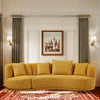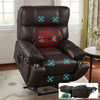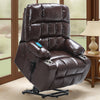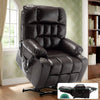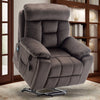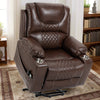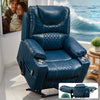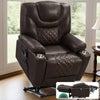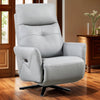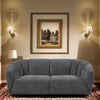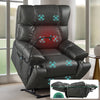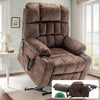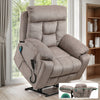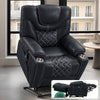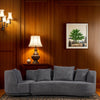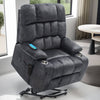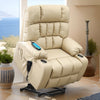The Evolution of Recliners: From Manual to Power
Understanding the Difference Between Power and Traditional Recliners
Power recliners and traditional recliners serve the same purpose: comfort. But they differ in operation. Traditional recliners use manual levers or body weight to recline. Power recliners use motors for smooth adjustments.

Power recliners offer more precise positioning. They're great for those with mobility issues. Traditional recliners are simpler and don't need electricity. They're often cheaper and more durable.
Both types come in various styles. This includes big and tall power recliners for larger individuals. The choice depends on personal needs, budget, and home setup.
The History of Recliners and Their Design Progression
Recliners have a rich history dating back to the 1850s. The first recliner was a camp chair designed for comfort. It gained popularity in the early 1900s as a luxury item.
Traditional recliners evolved with better mechanisms and materials. They became a staple in American homes by the mid-20th century. Designs ranged from basic to plush, leather-covered models.
Power recliners emerged in the late 20th century. They offered effortless adjustment and added features. Today's power recliners, including big and tall power recliners, blend comfort with technology.
Key Features to Look for in a Power Recliner
Ergonomics and Comfort: What to Consider
When choosing a power recliner, ergonomics is key. Look for models with good lumbar support. Adjustable headrests and footrests are also important for personalized comfort.

The chair should fit your body size. Big and tall power recliners cater to larger individuals. They offer wider seats and higher weight capacities.
Consider the upholstery material. Leather is durable and easy to clean. Fabric can be softer and more breathable. The padding should be firm yet comfortable for long-term use.
Technology and Automation in Power Recliners
Modern power recliners are packed with tech features. Many have USB ports for charging devices. Some offer built-in massage and heating functions.
Advanced models have memory settings. These remember your favorite positions. Voice control is becoming common, allowing hands-free operation.
Some power recliners have health monitoring features. They can track sleep patterns or vital signs. This tech makes them more than just furniture.
The Role of Power Recliners in Modern Living Spaces
Power recliners have become central to modern living rooms. They offer comfort and functionality in one package. Many serve as the main seating option in home theaters.
These chairs can blend with various decor styles. From sleek modern designs to traditional looks, there's a power recliner for every home.
Big and tall power recliners ensure comfort for all family members. They're especially useful in multi-generational homes. Power recliners can also aid in recovery after surgery or injury.
Comparing Power Recliners with Traditional Recliners
Advantages of Power Recliners Over Traditional Models
Power recliners offer effortless operation. This is ideal for elderly or those with mobility issues. They provide more precise positioning for optimal comfort.

Many power recliners, including big and tall models, have added features. These include USB charging, heating, and massage functions. Such extras aren't typically found in traditional recliners.
Power recliners often have smoother transitions between positions. This can be gentler on the body. They also tend to have more position options than manual recliners.
Disadvantages of Power Recliners for Some Consumers
Power recliners require electricity to function. This can be an issue during power outages. They also have more parts that can potentially malfunction.
The cost of power recliners is generally higher than traditional models. This includes both initial purchase and potential repair costs. They may also consume more energy, affecting electricity bills.
Some users find power recliners too complex. The technology can be overwhelming for those who prefer simplicity. Power recliners are also typically heavier, making them harder to move.
Cost and Space Efficiency: A Comparative Analysis
Traditional recliners are often more budget-friendly. They have fewer parts and simpler mechanisms. This usually translates to lower purchase and maintenance costs.
Power recliners, especially big and tall power recliners, can be pricier. However, they often offer more features and comfort options. This can make them a better long-term investment for some.
Space-wise, both types come in various sizes. Power recliners may need to be placed near an outlet. Traditional recliners offer more flexibility in placement.
Energy costs are another factor. Power recliners use electricity, adding to bills. Traditional recliners have no ongoing energy costs.
In terms of durability, traditional recliners often have an edge. They have fewer components that can wear out. However, high-quality power recliners can also last for many years with proper care.
Ultimately, the choice between power and traditional recliners depends on individual needs. Consider your budget, space, and desired features. Think about who will use the chair most often. For some, the added comfort of a big and tall power recliner is worth the extra cost. For others, a simple traditional recliner may be the perfect fit.







